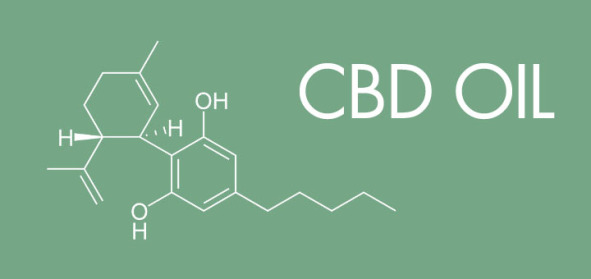Health Talk Blog
APRIL BLOG
CBD, PART 2
The Complete Health Store has been asked to research CBD in relation to Cancer. To reiterate from March’s blog post, CBD is growing in momentum in the health and wellness world with scientific studies confirming it may help treat a variety of ailments.
What Does The Endocannabinoid System (ECS) Do?
The Endocannabinoid System, ECS, is one biological system that exists in all mammals. Although the ECS performs different tasks in different parts of the body, its key role is to act as a “signaling network” - as one of the body’s largest neurotransmitter networks. According to published articles at the US National Library of Medicine, there is solid evidence that shows the ECS controls and regulates most of the body’s vital life functions including the central nervous, digestive, immune, endocrine, respiratory systems and others.
All hemp is cannabis... but not all cannabis is hemp!
Hemp is the plant Cannabis Sativa (cannabis) with a THC concentration of not more than 0.3 percent on a dry weight basis. Cannabis has been used for medicinal purposes dates back at least 3,000 years. Its use was promoted for reported analgesic, sedative, anti-inflammatory, antispasmodic and anticonvulsant effects. Cannabis was distributed by the U.S. government to patients on a case-by-case basis under the Compassionate Use Investigational New Drug program established in 1978.
Full spectrum CBD contains a variety of essential vitamins, minerals, fatty acids, protein, chlorophyll, terpenes, flavonoids and fiber. When referring to CBD in the hemp plant, the main compounds are CBD and cannabidiolic acid (CBDa). The University of Jerusalem’s Hadassah School study concluded that full spectrum was more effective in fighting pain and inflammation, provided faster and better relief and the effects lasted longer!
Full spectrum CBD oil contains Vitamins A, C, & E, complex B vitamins such as niacin, riboflavin, and thiamine. An increasing number of people don’t consume beta-carotene, but it is abundant in full spectrum oil. Crucial minerals include zinc, potassium, iron, calcium, and phosphorus. Full spectrum contains up to 20 amino acids including the nine essential ones such as Omega 3 and Omega 6, which help promote better heart health and is a good source of protein which helps repair and build tissues.
Alleviate Cancer-Related Symptoms
CBD may help reduce cancer related symptoms and side effects to cancer treatment, such as nausea, vomiting and pain. One study looked at the effects of CBD and THC with patients experiencing cancer-related pain. Those treated with the CBD/THC combination experienced a significant reduction in pain compared to those who received only the THC extract. There are also possible anticancer properties in the cannabinoids.
The British Journal of Clinical Pharmacology found evidence that CBD significantly helped to prevent the spread of cancer by suppressing the growth of cancer cells and promoting cell destruction! Other studies have the capability to reduce the spread of some types of cancer.
When cancer attacks the immune system, you are helpless in your own body. Studies have expressed interest in CBD for treating cancer because of chemotherapy’s side effects and THC’s psychoactive effects that may not be desirable to some. There are testimonies of people pleading that the public listen to their stories so people will be more open to finding what works best with their body!
Commercially available cannabinoids, such as dronabinol and nabilone, are approved drugs for the treatment of cancer-related side effects. Dronabinol, a synthetically produced delta-9-THC, was approved in the United States in 1986 as an antiemetic to be used in cancer chemotherapy. Clinical trials determined that dronabinol was as effective as or better than other suppressants for nausea or vomiting agents and studied for its ability to stimulate weight gain in patients with AIDS in the late 1980s. Nabilone, a synthetic derivative of delta-9-THC, was first approved in Canada in 1982 and is now also available in the United States.
CBD and leukaemia/lymphoma
Most cancers are identifiable through their names, but lymphoma’s target isn’t in the title. Lymphoma attacks parts of the immune system or the lymphatic system, making the body weak and vulnerable to diseases. The lymphatic system also kills off cancer cells in your body!
Chemotherapy, with a 40% success rate, is the primary treatment for Lymphoma. Cancer spreads quickly because it causes cells to multiply and chemotherapy halts the cell division process. Problems patients face is the other parts of the body that need cell reproduction is halted. Unfortunately, this treatment is also hazardous. Along with hair loss, vomiting, and extreme fatigue it weakens the body. Those diagnosed with cancer need all the strength they can get in their bodies, and taking away their ability to hold down food has proven to be a huge hurdle.
CBD has been shown to stop cancer from spreading and encourage those cancer cells to die. While doing this, cells that need to reproduce, such as hair and bone marrow, continue to function as usual. Further studies show healthy human cells aren’t encouraged to die off revealing it only targets the unhealthy cells.
Unfortunately, these studies are only in labs! If you are unsure about using CBD alone because you are at an advanced stage and want aggressive treatment, many patients choose to use cannabidiol along with their chemotherapy to enhance its effects or lessen the side-effects.
How CBD Might Control Cancer Cell Growth
CB1 activates the Central Nervous System, CNS, messaging system, while CB2 activates the immune system. Both THC and anandamide activate both receptor sites because the body can use both interchangeably. CBD gravitates towards CB2 receptors in the spleen, home to the immune system. CB2 activates the immune system and mimics the formation, function of produced substances, mechanisms and processes that are biologically produced in the body’s naturally occurring endogenous cannabinoid neurotransmitter, naturally activating CB2 receptors. THC and CBD cannabinoids have the ability to kill cancer cells directly without going through immune intermediaries. THC and CBD hijack the lipoxygenase pathway to directly inhibit tumor growth.
Very simply, THC connects to the CB1 or CB2 cannabinoid receptor site on the cancer cell, causing an increase in ceramide synthesis which drives cell death. Normal healthy cells do not produce ceramide in the presence of THC and not affected by the cannabinoid. Cancer cells die, not because of the toxic effects of certain cells, but because of a tiny shift in the mitochondria, the organelle cell substance between the cell membrane and the nucleus of cells.
How does work get done at the cellular level?
Where does the body make the endocannabinoids? Endocannabinoids originate in nerve cells at the region nerves impulses are transmitted and received, or synapse. When the body is compromised by illness or injury it calls to the endocannabinoid system, directing the immune system to bring healing. In the cell is the mitochondria, which produces energy or ATP, for cellular use. As ceramide accumulates, it increases the mitochondrial membrane’s permeability to cytochrome c, a critical protein in energy synthesis. Cytochrome c is pushed out of the mitochondria, killing the source of energy for the cell. The success of this process is the accumulation of ceramide in the system or taking therapeutic amounts of CBD and THC, steadily over a period of time, keeping metabolic pressure on cancer cell death.
How can the body take a simple plant enzyme and use it for profound healing in different physiological systems? Nature has designed the perfect medicine that fits exactly with our own immune system of receptors and signaling metabolites to provide rapid and complete immune response for systemic integrity and metabolic homeostasis. The endocannabinoid system exists in all animal life, waiting for its matched exocannabinoid activator. The endocannabinoid system covers all cells and nerves and is the messenger of information between the immune system and the central nervous system, CNS. It is responsible for neuroprotection, and micro-manages the immune system and the primary control system that maintains homeostasis, our well-being!
Possible Effects of Using Cannabidiol for Cancer Symptom Relief
The major advantage of using CBD to relieve cancer symptoms is it doesn’t have the side effects associated with strong chemical medications nor make the patient feel “loopy” or “high”. All these effects are caused by locking off of CB2 receptors with the use of CBD. CBD has been proven to have an array of positive effects on cancer patients such as:
- Triggering the death of cancer cells
- Preventing unhealthy cell division
- Preventing tumor growth in new blood vessels
- Reduces the spread of cancer cells throughout the body
- Speeds up the waste disposal mechanism of the body, autophagy, which can cause the death of cells.
More studies are needed, but it is ALMOST confirmable that cannabidiol can be used as an effective complementary cancer therapeutic aid.
ALWAYS CONSULT YOUR PERSONAL HEALTH CARE PROFESSIONAL
- Magic Essence Information – Enlightened Botanicals - https://themagicessence.com/info/CBD_Facts_&_Benefits.pdf
- https://cbdoilsandedibles.com/cbd-for-cancer/
- https://www.healthline.com/health/cbd-oil-benefits
- https://www.projectcbd.org/news/quick-hits/combining-cbd-cancer-treatment
- https://www.cureyourowncancer.org/how-cannabis-oil-works.html
- https://www.ncbi.nlm.nih.gov/pubmed/11479216
- https://cbdinstead.com/blogs/cbd-and-cancer/can-cbd-help-treat-lymphoma
- https://www.ncbi.nlm.nih.gov/pmc/articles/PMC3579246/
- https://www.cancer.org/cancer/non-hodgkin-lymphoma/treating/bone-marrow-stem-cell.html
- https://stemcellthemagazine.com/2018/08/stem-cell-therapy-for-non-hodgkins-lymphoma/
- https://www.cancer.gov/about-cancer/treatment/cam/hp/cannabis-pdq





